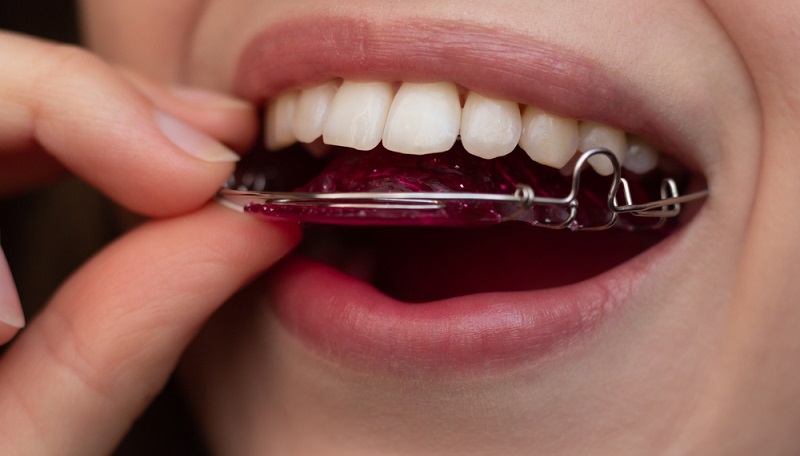
Finishing orthodontic treatment is a big milestone. Whether you’ve had braces or aligners, that first look at your straightened smile can feel like a huge reward. But treatment doesn’t stop there. Retainers play a major role in making sure your results last. A common question patients ask is, “How long will I need to wear my retainer?” The answer depends on several factors, and your orthodontist will create a personalized plan.
Why Retainers Are Not Optional
After your braces come off or your aligner plan ends, your teeth are not firmly set in their new positions. They need time to stabilize. This is where retainers come in. Retainers hold your teeth in place while the surrounding bone and tissue adapt to the changes. Without them, your teeth will likely shift back to where they started.
This process is called relapse. It’s most common within the first year after treatment but can happen at any point in life. Teeth are always under pressure from chewing, speaking, and natural changes in the mouth. Retainers help maintain the alignment you worked hard to achieve.
The First Year Is Critical
Right after your braces are removed, your orthodontist will likely recommend wearing your retainer full-time. That typically means around 22 hours a day, only taking it out to eat or brush your teeth. This phase usually lasts for the first three to six months, depending on your case.
Some people may need to wear a retainer full-time for up to a year. Others may transition to nighttime wear a bit sooner. The key is consistency. Skipping days or wearing it for fewer hours than advised increases the risk of your teeth shifting.
Transitioning to Nighttime Use
Once your orthodontist determines your teeth have stabilized enough, you’ll move to wearing your retainer only at night. This is usually easier to maintain long term. For many patients, nighttime wear continues for several years. In some cases, it may even be recommended for life.
The idea of wearing a retainer forever may sound frustrating, but nighttime use becomes routine. Just like brushing your teeth before bed, slipping in your retainer becomes a habit that protects your investment in your smile.
Why Lifelong Retainer Use May Be Advised
Teeth don’t stop shifting after orthodontic treatment. Even adults who never had braces can experience crowding or movement over time. This happens because the jaw shape changes with age, and natural wear and tear impact tooth positioning.
Wearing a retainer at night helps prevent this. Even a few nights without it can lead to tightness the next time you try to put it in. That’s a sign your teeth have started to move.
Your orthodontist may suggest lifelong nighttime wear not because something is wrong, but because they want your results to stay stable for years to come.
Different Types of Retainers and Their Schedules
There are two main types of retainers: removable and fixed. Each has its own care requirements and wear schedules.
Removable retainers are typically made of clear plastic (like Essix retainers) or wire and acrylic (like Hawley retainers). Most patients start with full-time wear and eventually shift to nighttime use. Because they can be taken out, the risk of losing or damaging them is higher, so care is important.
Fixed retainers, also called bonded or permanent retainers, are wires glued to the back of your teeth. They stay in place at all times and are often used for lower front teeth. Even with a fixed retainer, your orthodontist may still recommend a removable one for the upper teeth or as backup.
How to Know If You Can Reduce Wear Time
Always follow your orthodontist’s instructions when it comes to reducing how often you wear your retainer. If your teeth haven’t moved and your retainer still fits comfortably after several months, your provider may approve a lighter schedule. But never stop wearing your retainer completely unless your orthodontist specifically says it’s safe.
If your retainer feels tight, that’s a warning sign. It means your teeth are starting to shift. The sooner you address it, the better. Wearing your retainer consistently again can often correct minor movement, but if the changes are significant, you may need a new one or even additional orthodontic treatment.
Tips to Keep Your Retainer in Good Shape
If you want your retainer to last and do its job, daily care is important. Here are some basic guidelines:
- Clean your retainer daily with lukewarm water and a soft brush.
- Avoid soaking it in hot water, which can warp plastic retainers.
- Keep it in a protective case when not in use.
- Don’t wrap it in napkins — that’s a common way people lose them.
- Bring it to your orthodontic checkups to make sure it still fits properly.
Replacing a lost or damaged retainer can be costly, and the longer you go without one, the greater the risk of your teeth moving.
Retainers Are a Long-Term Commitment
Orthodontic treatment doesn’t end the day your braces come off. Retainers are part of the long-term strategy to keep your teeth in the right place. Most people will need to wear a retainer in some form for the rest of their life. That may sound like a lot, but with good habits, it becomes second nature.
Think of your retainer as protection for your smile. You’ve already gone through the work of straightening your teeth — keeping them that way is simply the next step.
Conclusion
Every patient’s situation is unique, and your orthodontist in Mississippi will guide you based on your specific needs. If you have questions about your retainer schedule or feel like your teeth are shifting, it’s always best to reach out. A short visit can save you from needing braces again.
The commitment to wearing a retainer might feel small compared to the benefits of a straight, lasting smile. With the right routine and support, it’s easier than you might think.